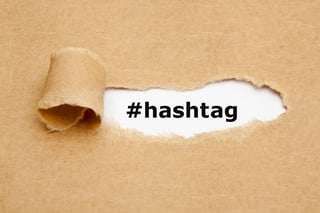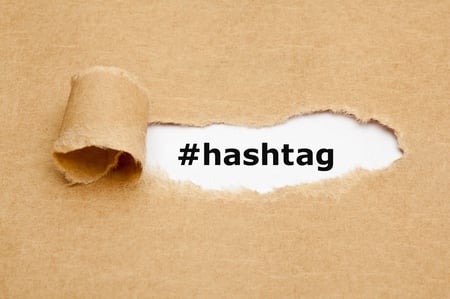 The world is full of mysterious occurrences. Ghosts, strange lights in the sky, hashtags—all mysterious phenomenons. Yes, I would lump hashtags into that group. Through my experience in helping businesses with their social media marketing, I've learned that many people, even marketing professionals, just don't understand what a hashtag is or its purpose. Let's unravel the mystery and learn how to put hashtags to work for your business.
The world is full of mysterious occurrences. Ghosts, strange lights in the sky, hashtags—all mysterious phenomenons. Yes, I would lump hashtags into that group. Through my experience in helping businesses with their social media marketing, I've learned that many people, even marketing professionals, just don't understand what a hashtag is or its purpose. Let's unravel the mystery and learn how to put hashtags to work for your business.
What is a Hashtag?
Once you step into the Twitter or Instagram world, it won't take long before you come across a tag-like word with a pound (#) symbol before it. This my friends is known as a hashtag. Here are some examples: #Marketing #Smallbusiness #NCAABasketball #WhatIHadForDinner.
A hashtag can be almost any word or collection of words, as long as there is no spaces in it. These are phrase hashtags: #YouWishYouWorkedAtImpulse #KillingOffCancer #WhyAmIBald. Once a space is entered, the hashtag is broken and the part connected to the # will be clickable or searchable. These are not complete hashtags: #I Love My Mom, #My Cat is Green. The only part platforms like Twitter and Instagram would make a link in these would be the #I and the #My. Any word or combined phrase can be a hashtag as long as the # is directly in front of it. Hashtags are not case sensitive and can use letters and numbers. Some are used more often, but anyone can create a hashtag, it's just a matter of it being used by others. The hashtag #PizzaAtemydog might not have as much interaction and people using it as #Ilovetotravel.
Using a Hashtag
Now that we know what a hashtag is, it's time to put them into action. By placing the # in front of the word or phrase, social media platforms recognize this and make it a clickable link. When clicked on in networks like Twitter, Facebook, and Instagram, the hashtag opens a new screen to show you all occurrences of other people using that same hashtag. If you were to click on #NEPatriotsFans, you would be able to interact with other Patriots fans even though you don't follow them. You could talk about the game, look for tickets, discuss parking at the stadium—anything. It really opens a new perspective on using these social networks.
Common Hashtag Uses
Hashtags are used a lot a trade shows, classes, meetings, associations, and conventions. The organizing body often creates a hashtag (Ex. #FortMyersMeets2015) so that everyone attending can communicate and share ideas during the event.
Take part in a tweet chat. For example, once a week Caribbean enthusiasts, bloggers, travel agents, and anyone else that has an interest in the Caribbean jumps on a tweet chat at 3pm every Friday for #CaribbeanChat. The topic changes weekly and it's usually moderated by a host and guest hosts. For an hour, people tweet back and forth discussing Caribbean topics. People meet, exchange ideas, and even conduct business. Chats like this happen all the time and chances are there's one for your industry. Simply run a search in Twitter, or a 3rd party tool like HubSpot or HootSuite, for the hashtag you'd like to follow and you too will be able to take part in the chat.
Two other great uses of hashtags are that they let you keep an eye on your competition and reach new customers. Let's say you sell flip flops. Run a search for #FlipFlops and you'll see people tweeting about flip flops and other footwear companies marketing their flip flops. This gives you a power tool for monitoring what potential customers are saying, trends they are looking for, and hot geographical markets. Just imagine the possibility of being able to tweet out a photo of your new flip flop styles to a person that just tweeted, "I need a new pair of #flipflops!"
Think of hashtags like tags you can add to the end of you tweets and Instagram photos. If you post a photo of a product or destination, then add a hashtag or two behind it. This allows others that have an interest in that photo to find you, even if they don't follow you. This is a great way to gain new followers and expand your brand's reach.
There's really nothing mysterious about hashtags. They are great tools most commonly used on Twitter and Instagram, and allow users to follow people with similar interests, get in touch with customers service, track competition, and share ideas. Start clicking on a few hashtags and using them in your tweets and Instagram photos, you'll open the door to a whole new social world.





